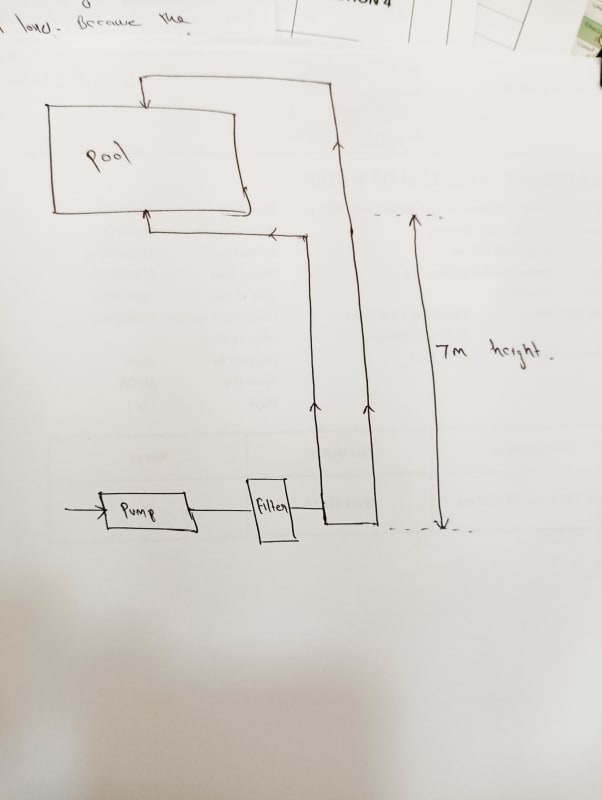I was doing the head loss calculation for my swimming pool system for sizing suitable pump for filtration. Here I can use a maximum of 4" pipe. I calculated thr head requirement for my system. Here I have 7m static head and the friction losses around 13m. But I need to reduce the friction loss without increasing the pipe size.
If I add one more branch, I can reduce friction loss. Because the flow rate required should be reduced to half. But if I do so, how can I take the static head?. Is it 7m or do I need to consider it as 14m? Because 2 pipes are running vertically. Pls check the attachment.
If I add one more branch, I can reduce friction loss. Because the flow rate required should be reduced to half. But if I do so, how can I take the static head?. Is it 7m or do I need to consider it as 14m? Because 2 pipes are running vertically. Pls check the attachment.

